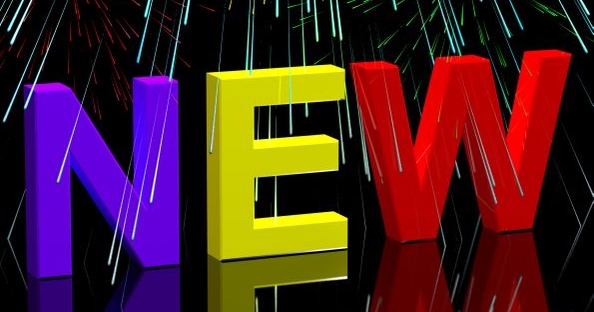The inexorable march of innovation and discovery curtails the temporal experience of our contemporary society. “New” and “newer,” while seemingly simplistic terms, encapsulate complex narratives of advancement and transformation. As epochs evolve, the significance attributed to these concepts burgeons, leading to an ever-changing landscape where groundbreaking ideas continuously reshape our understanding. This essay examines the nature of breakthroughs and the thirst for ingenuity in a rapidly evolving world, exploring the multifaceted dynamics between invention, perception, and societal progression.
The pursuit of the new often embodies a duality. On one hand, it signals the advent of groundbreaking technologies or discoveries that redefine paradigms; on the other, it depicts a transient nature which can render previous achievements obsolete. The dissonance between what is considered novel and what is merely an iteration of existing modalities raises essential queries regarding the essence of progress itself. The objective impact of such advancements must always be weighed against their sociocultural ramifications. For example, the meteoric rise of digital technology signifies not only an unparalleled access to information but also engenders a cognitive dissonance as individuals grapple with the implications of omnipresent connectivity.
The rapid acceleration of technological innovations, notably observed in the fields of artificial intelligence and biotechnology, elicits both admiration and apprehension. Promising prospects abound, with the potential to alleviate myriad societal challenges ranging from healthcare disparities to climate change mitigation. Yet, the overwhelming pace at which these breakthroughs emerge can mask critical ethical and existential concerns. The transformative power of CRISPR gene-editing technologies, for instance, offers the tantalizing possibility of eradicating genetic disorders while simultaneously prompting debates regarding the moral implications of genetic manipulation.
Furthermore, the phenomenon of obsolescence permeates all industries, compelling stakeholders to navigate an increasingly precarious landscape where agility and foresight are paramount. The shift from traditional business models towards agile methodologies illustrates a profound realization: adaptability signifies survival. In an era marked by ephemeral trends, legacy systems that resist evolution risk marginalization. The transition from conventional retail to e-commerce platforms exemplifies this paradigm shift, with consumer behavior inexorably gravitating towards immediate fulfillment and convenience.
In examining the concept of “newness,” it becomes evident that innovation is intrinsically tied to interdisciplinary collaboration. The synthesis of disparate fields can catalyze revolutionary breakthroughs. The intersection of neuroscience and artificial intelligence provides a poignant illustration; here, collaborative research endeavors aim to illuminate the workings of cognitive processes while simultaneously enhancing machine learning algorithms. This confluence of insights not only fosters deeper understanding but also propels the iterative cycle of innovation forward. Moreover, the democratization of knowledge through open-source access facilitates this collaborative spirit, effectively blurring the boundaries that once delineated academic and industrial spheres.
However, the pursuit of “new” engenders a cultural ethos increasingly enamored with novelty for its own sake. Such phenomena result in what has been termed “innovation fatigue,” where individuals and organizations become desensitized to the incessant barrage of new advancements. This ennui raises pivotal questions: how does society discern between meaningful innovation and superficial trends? As the cacophony of marketing noise proliferates, critical discernment becomes imperative. Cultivating a mindset that values depth over breadth may serve as a remedy to the pernicious effects of innovation fatigue.
Amidst this conundrum, the allure of the “newer” encapsulates the perpetual quest for enhancement. Yet, the preoccupation with continuous improvement, often accompanied by metrics of success, can foster a risk-averse culture that stifles radical experimentation. Embracing failure as an intrinsic component of the innovation process is indispensable to foster enduring breakthroughs. In this context, organizations must cultivate a culture that rewards calculated risks and iterative failures, recognizing that each misstep harbors the potential for invaluable learning.
The narrative of “new” and “newer” extends beyond technology and industry; it permeates the arts and humanities, reshaping our comprehension of cultural expression and experience. Contemporary artists often challenge established norms, leveraging innovative mediums to provoke new dialogues. Similarly, literary theorists and philosophers confront inherited doctrines by reinterpreting canonical texts through diverse lenses, thereby enhancing our collective understanding of the human experience. This artistic reimagining further illustrates the profound impact of new ideas as catalysts for societal reflection and renewal.
As the world accelerates towards an uncertain future, embracing the duality of “new” and “newer” becomes paramount. The tension between the allure of innovation and the necessity for critical engagement challenges individuals and institutions alike to navigate uncharted waters with discernment and ingenuity. The interplay between invention and its implications underscores the importance of inquiry—a dynamic commitment to seeking a deeper understanding of the forces that shape our world. The promise of breakthroughs lies not solely in their novelty but in our capacity to harness them thoughtfully, providing pathways to address the intricate tapestry of contemporary challenges.
In conclusion, the pursuit of “new” and “newer” in a rapidly evolving world beckons both excitement and caution. It invites an ongoing dialogue about the nature of progress and the responsibility that accompanies innovation. By sustaining a keen curiosity and an open mind, society may unveil potentials that extend beyond mere technological marvels, fostering an environment conducive to meaningful evolution. Ultimately, the essence of progress thrives on a dynamic interplay between aspiration, reflection, and ethical consideration, forging a path toward a future where breakthroughs serve to enrich the human experience.












